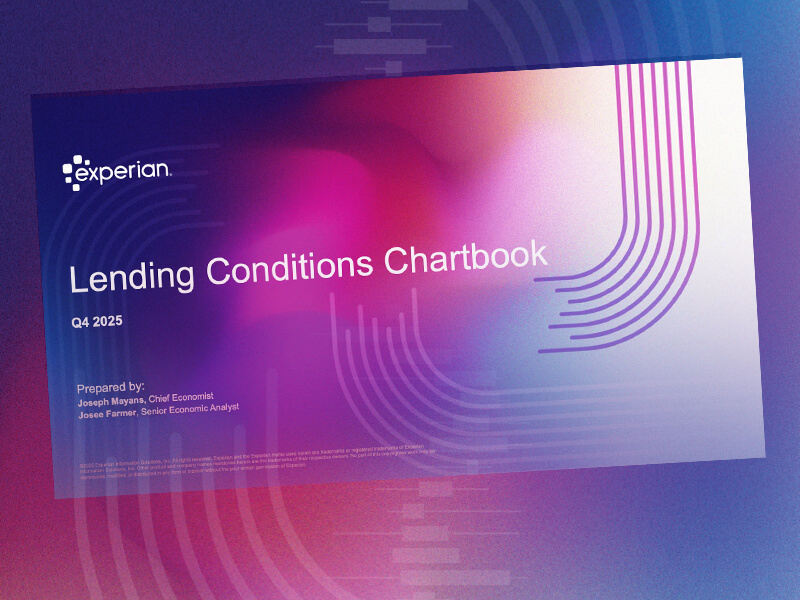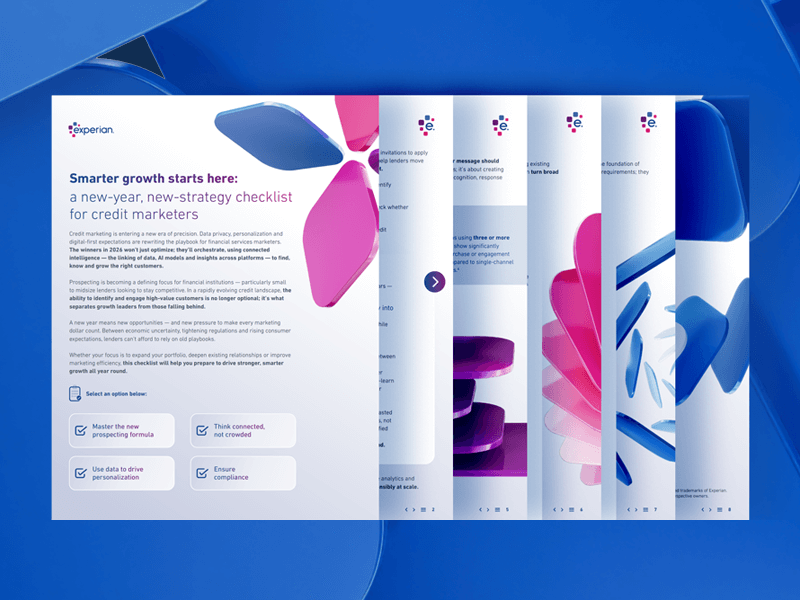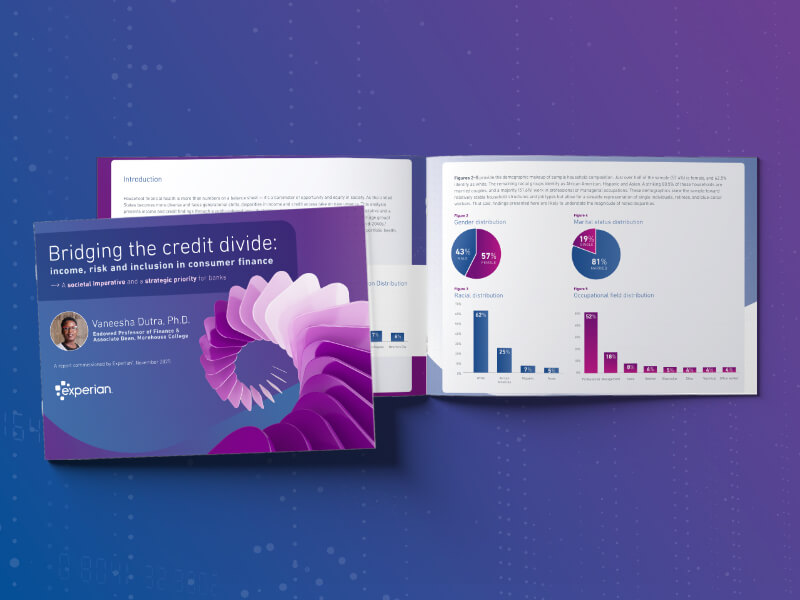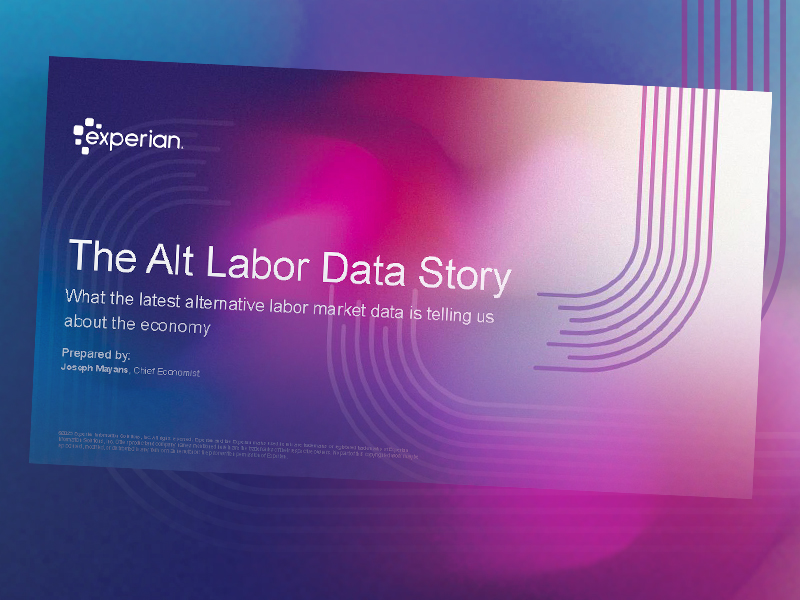Report
Published October 9, 2024
Banks Credit & Economic Trends Economic & Market Insights Marketing
Explore Gen Z's habits and attitudes toward credit, personal finance, marketing, fraud and more.
Gen Z fast facts:
- There are 69.3 million Gen Z-ers in the United States.
- They spend six or more hours per day on their cell phones.
- They collectively demand purpose and accountability from brands they interact with.
They demand the creation of more opportunities for people of diverse and underrepresented backgrounds. Lack of financial resources and funding options are seen as barriers in achieving their goals.
Source: Statista, McKinsey & Company.
Complete the form to access the report
This site is protected by reCAPTCHA and the Google Privacy Policy and Terms of Service apply.
Thank you for your interest
Your free Experian resource is now available. Enjoy!
 Report
Report
Q4 2025 Lending Conditions Chartbook
Despite tariff headwinds in 2025, the U.S. economy exceeded expectations and is positioned for continued growth. Improving credit dynamics point to a stronger lending environment in 2026.
- Solid economic momentum heading into the new year
- Improving lending standards and rising credit demand
- Stable delinquency trends support healthier credit conditions
 Tip Sheet
Tip Sheet
Smarter growth starts here: a new-year, new-strategy checklist for credit marketers
A new year means new opportunities — and new pressure to make every marketing dollar count. Whether your focus is to expand your portfolio, deepen existing relationships or improve marketing efficiency, this checklist will help you prepare to drive stronger, smarter growth all year round.
You’ll discover how to:
- Master the new prospecting formula
- Use data to drive personalization
- Create cohesive messaging across channels
 White Paper
White Paper
Closing the credit gap
Read the latest findings about "Closing the credit gap" white paper, and what they mean for financial inclusion and risk management.
Key insights:
- Income and credit trends reveal significant disparities that impact access to financial products.
- Demographic shifts across gender, household structures, ethnicities, and generations are reshaping borrower profiles.
- Lenders who adapt their strategies and product offerings can expand their customer base, reduce default rates, and lead in inclusive finance.
 Report
Report
The Alt Labor Story
The longest U.S. government shutdown has paused official labor data, but private-sector insights reveal key trends shaping the job market. Alternative sources show slowing job creation, modestly higher unemployment, and signs of resilience consistent with the Fed’s outlook.
- Job growth weakened in late 2025 across major indicators
- Layoff announcements rose, but claims remain low
- Unemployment edged up in line with Fed projections
- Labor market stress remains relatively contained